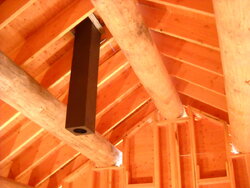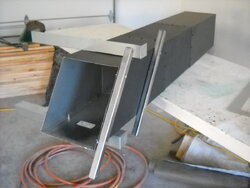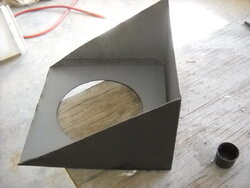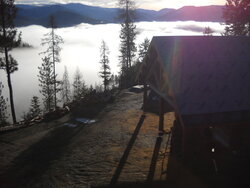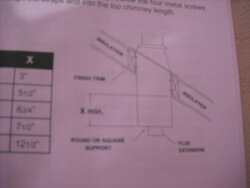I'm building a log home and need to do a roof penetration. The chimney will come out very near the ridge. It's cathedral ceiling with large log purlins every 5 foot on center and 8 in 12 pitch. I'm looking for a support box 4 feet long so that the single wall pipe below it will not be within 18" of the lower purlin.
Does anyone make a one piece 48" x 6" support box? Local supplier has "support box extensions" but I'm doubtful about how professional that will look, given the nature of sheet metal.
Does anyone make a one piece 48" x 6" support box? Local supplier has "support box extensions" but I'm doubtful about how professional that will look, given the nature of sheet metal.


